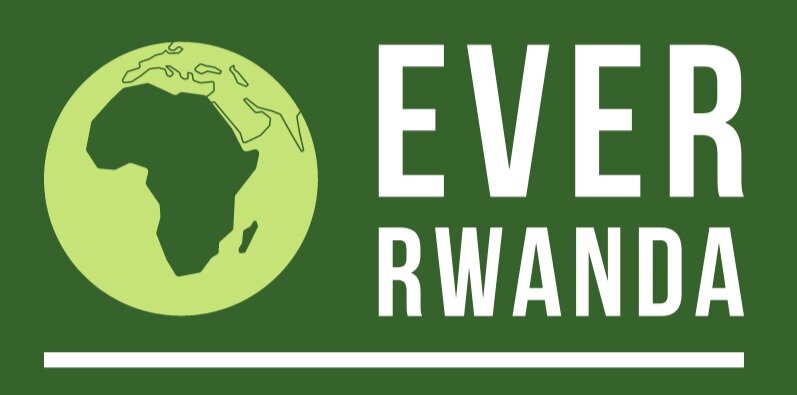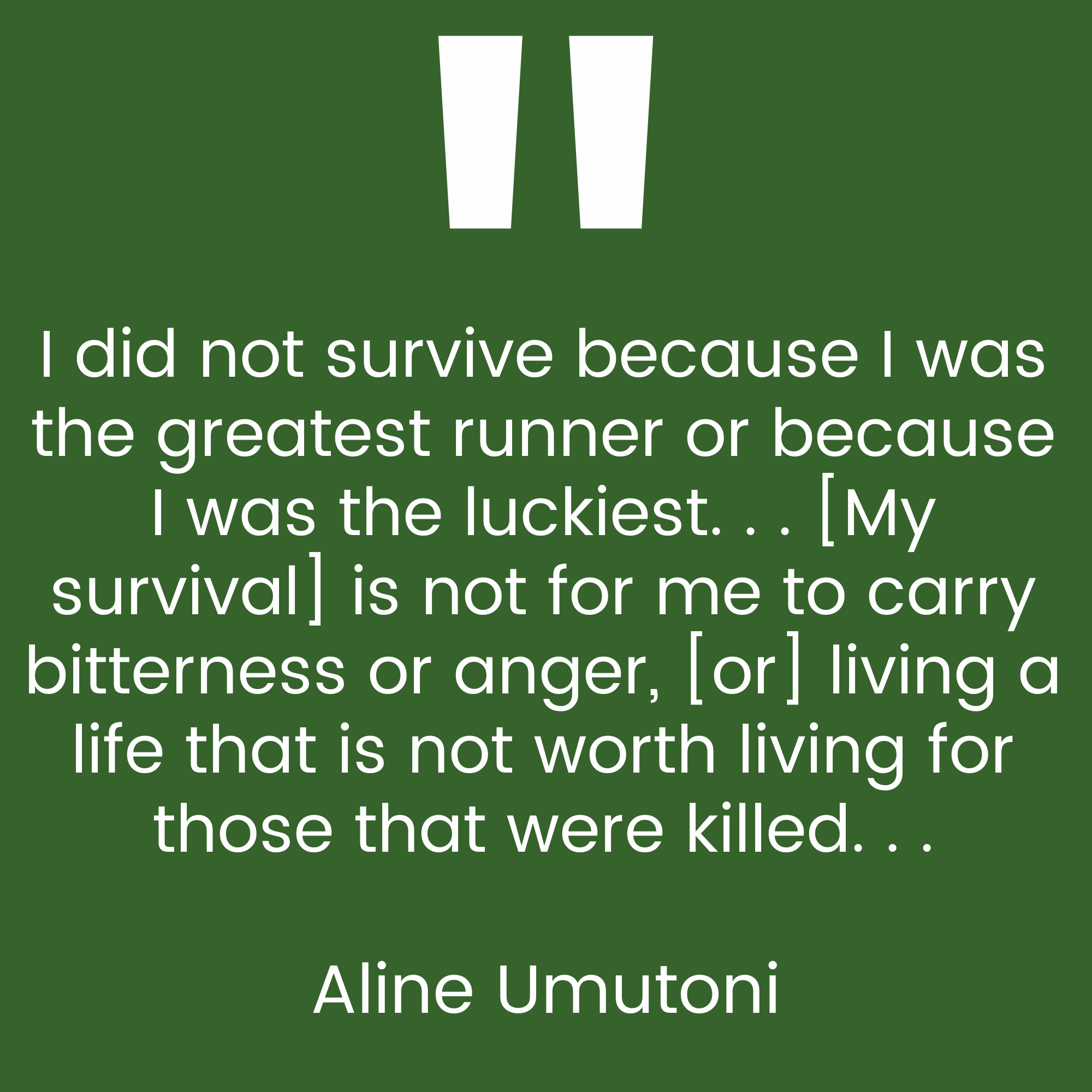Restorative Justice, Forgiveness, and Reconciliation in Post - Genocide Rwanda
“I carry no burden in my heart.” Console Nishimwe survived the Genocide against the Tutsi as a fourteen year old, yet her beloved father, Andre Ngoga, and three younger brothers, Philbert Nkusi, Pascal Muvara, and Bon-Fils Abimana, were brutally murdered. How was she able to forgive the killers, some of whom her family had been close to prior to the genocide? Even more, how was her family able to reconcile with some of the killers? How have the people of Rwanda, only two decades after a genocide in which neighbors killed neighbors, been able to peacefully move forward as a nation not of Hutus or Tutsis but as all Rwandans?
“One of the most difficult issues which my family struggled to come to terms with after the genocide was trying to comprehend how could it be possible for our very close neighbors . . . among others, to betray decades of kindness and friendship we had shown them and become so vicious towards us,” Ms. Nishimwe explained (Nishimwe, 191). She reflected that “[f]or years following the genocide, my mom grappled with these issues, having to balance her severe emotional pain with her principles of resisting hatred and revenge against who had hurt us” (191). How were families ultimately able to heal?
In the case of Ms. Nishimwe’s family, her mother was able to renew a friendship with the family of one of the murderers of her family members. “As the years passed, [one of the killer’s] father and other members of his wider family circle had been visiting my mother to express their remorse and the previously close relationship which our family shared with theirs slowly began to rekindle.” They also gave her mother a cow as a “symbol of that friendship” which “she accepted in good faith” (191). It was a process, as it took over thirteen years for justice to be served for the murders of her brothers. One killer publicly apologized and told them the location of her brothers’ remains. Fifteen years after the genocide, they were able to retrieve the bodies of Ms. Nishimwe’s beloved brothers and give them a proper burial. This, she explained, “helped to bring us some closure” (192).
Every country in the world must contend with issues of violations of human rights, crimes, and punishment. In response to conflict, nations have adopted various mechanisms of post-conflict punishment, rehabilitation, reconciliation, and the restoration of peace. Some nations have adopted a system based primarily upon retributive justice, while others have adopted a restorative justice system. At the foundation of a retributive justice system is the belief that crimes are an act against the state system, while restorative justice systems view crimes as against a person and the community. As such, restorative justice systems are premised on the belief that punishment alone is an ineffective resolution and that victims must play a central role in conflict resolution. As such, restorative justice systems emphasize dialogue, reconciliation, rehabilitation, and community-based restoration.
This year, the country of Rwanda marked 27 years since the genocide against the Tutsis, which took place over 100 days in 1994 and resulted in the murder of approximately one million people. Since then, Rwanda has made substantial progress in supporting the process of reconciliation and establishing peace. A vast array of interventions to promote reconciliation, restorative justice, peace building, and positive community relations have been implemented. These initiatives have occurred at all levels, from the national government level to community and interpersonal levels. Such efforts have been successful as the years since the genocide have seen one cohesive society with increasingly peaceful community relations and no incidents of large-scale violence. How has peaceful community living been possible in the aftermath of conflict and grievous suffering? Specifically in the case of Rwanda, how have post-conflict restorative efforts to promote reconciliation and unity been employed to strengthen communities?
Today, Rwanda officially promotes the concept of a “united national identity: Ndi Umunyarwanda, which means, ‘I am Rwandan’” rather than identifying oneself as Hutu or Tutsi (Blackie, Laura E.R., and Nicki Hitchcott. "'I am Rwandan': Unity and Reconciliation in Post-Genocide Rwanda." Genocide Studies and Prevention: An International Journal, vol. 12, no. 1, 2018).
Dr. Tharcisse Seminega, who survived the genocide along with his wife and five children, shared his thoughts on the post-genocide reconciliation efforts in Rwanda. He explained: “The Unity and Reconciliation Commission was created in 1999 and accompanied by a well-structured framework law. In addition, the national unity policy abolished the ethnic mention on the identity card and established a law prohibiting the use of the terms Hutu, Tutsi, and Twa in everyday conversations. Everyone is now Rwandan. The government has also put in place counseling centers to help victims of the genocide recover, built cheap homes for survivors, helped orphans go back to schools and widows earn a living. The Commission certainly responded to a real need because after genocide, Rwandans needed to heal their traumatic effects and wounds left by this tragedy. Survivors had lost members of their families, genocidaires were tormented by a feeling of guilt which sometimes wrongly gripped the entire Hutu ethnic group, returnees from exile were terribly frustrated to find almost all the members of their close and extended families decimated” (Seminega, Tharcisse. Interview. Conducted by Emelia O’Neill. 22 April 2021).
Some researchers have noted that “the Rwandan government’s policy on unity and reconciliation positions citizens with a moral duty to uphold the tenets of this policy for the good of their country” (Blackie, 24-37). As such, some researchers argued that “individuals sometimes align themselves with the government’s storyline for pragmatic rather than ideological reasons, namely to avoid further violence or genocide and uphold peace for the sake of the country’s youth.” The experiences of many Rwandan genocide survivors, though, like Ms. Nishimwe and her family, illustrates how the implementation of restorative justice principles has not only contributed to peaceful community living in the aftermath of genocide, but has provided personal healing.
The act of granting forgiveness has been transformational for many Rwandan genocide survivors. Aline Umutoni survived the genocide at the age of five. Years later, as a young adult, she concluded: “I knew the only way to live a life of freedom was to let go of the hurt and forgive all of the people I still held in my heart, especially the men behind my father’s murder” (Umutoni, 161). She also recounted how not only was her father murdered, but ninety eight percent of her family was murdered, including her grandparents. As an adult, she returned to Rwanda and was visiting her murdered grandfather’s grave when she was greeted by two men. She later learned that they were the very men responsible for her grandfather’s death; and they had been released by the gacaca courts. She wrote that even though she was angry at them, she decided to forgive them (164-165). Her uncle shared with her that “he chose to forgive the people that killed his father and learned to embrace them whenever he went to his father’s house” (165). Ms. Umutoni’s uncle “encouraged [her] to forgive the people who killed [their] family members. He stated that hatred would not be beneficial to [her] and would hurt [her] even more” (165). Ms. Umutoni, though, “needed to know the truth” before she could heal completely (166).
For Ms. Umutoni, knowing the truth of what had happened was an important aspect in being able to forgive. In 2002 she chose to go to a Rwandan prison to see a man who was responsible for her father’s murder and who had ordered her, as a five year old child, to be killed (166). She said that she “needed it to heal and believed that the only way to heal would be to forgive him when I saw him” (167). At the prison, though, she was not permitted to reveal her identity to the man who murdered her father. After meeting him, she realized he was not remorseful (170-171). Nevertheless, she chose forgiveness.
She recalled: “For me, the prison was a place of deliverance. I went home freer than ever. I was a different person after I met the man who took my father’s life. Although my questions were not answered, I felt peace because I could now grieve my father and heal. I was not done grieving my father, but I was done hating the people who hurt him . . . As we left the prison, my smile came back. It felt like the sun was rising in my life. I was no longer in the darkness” (171).




